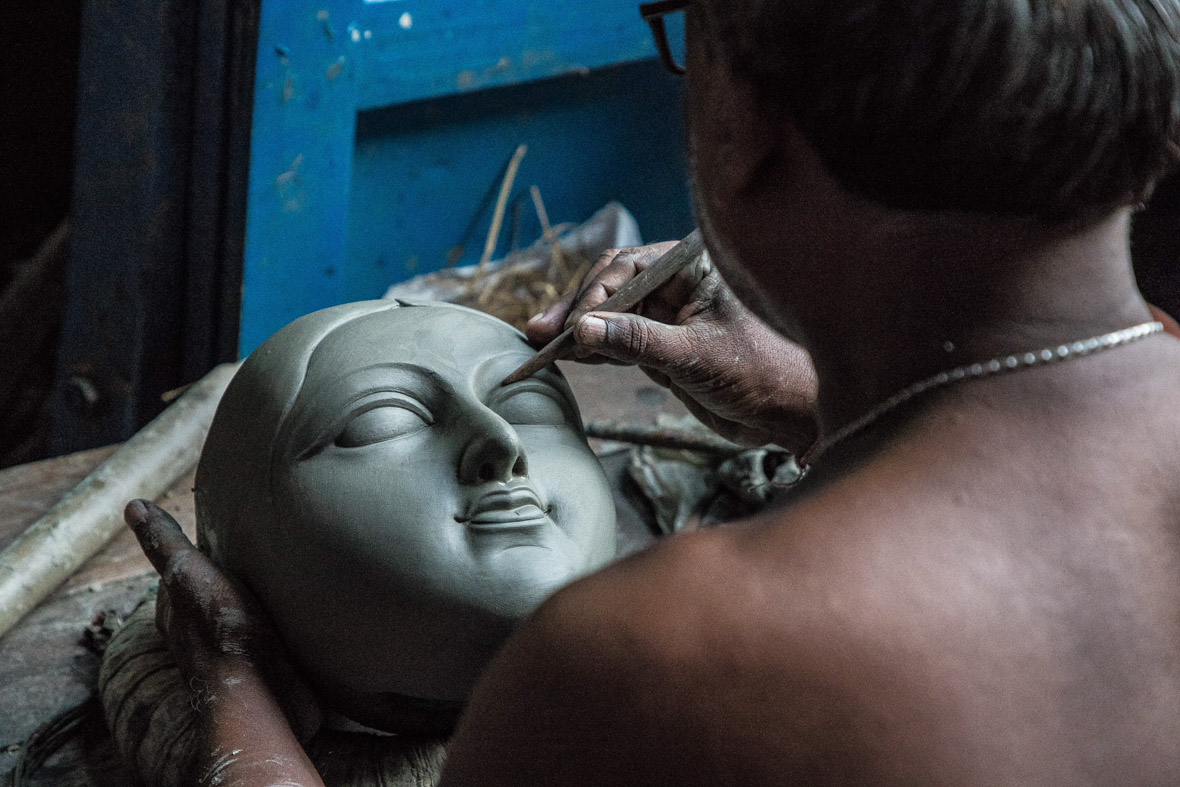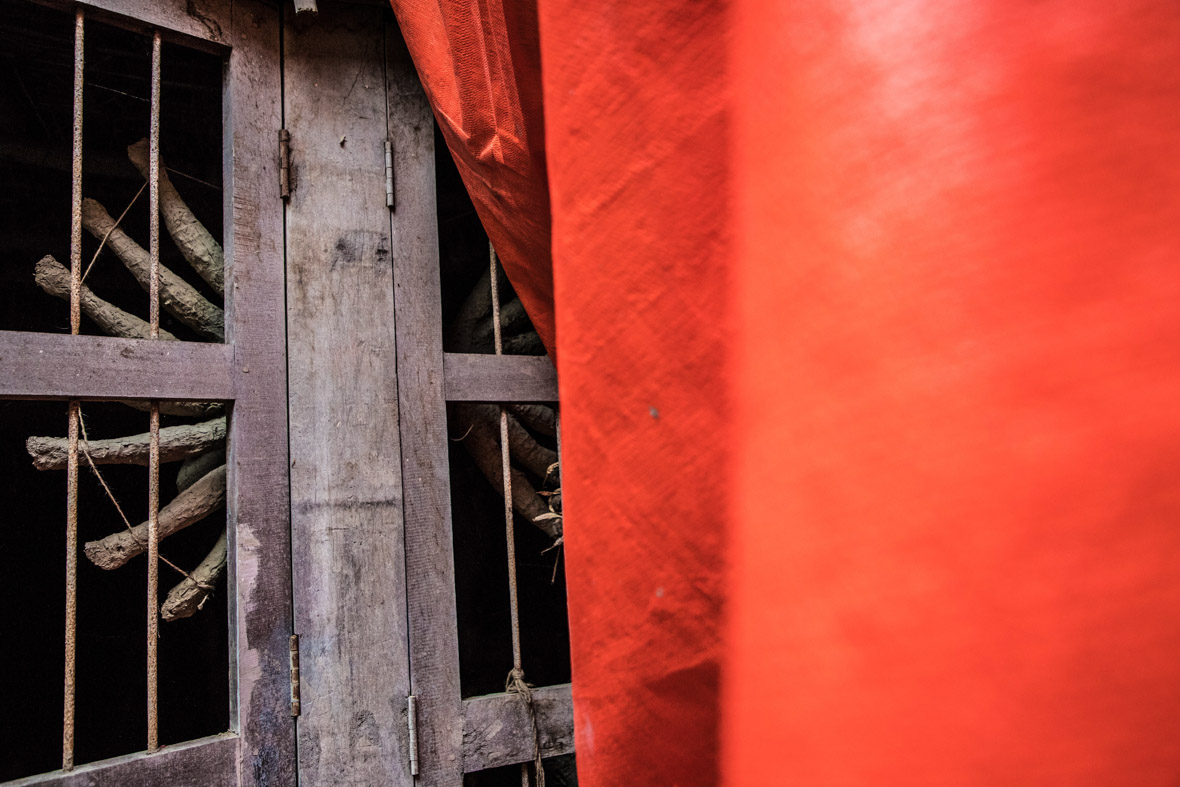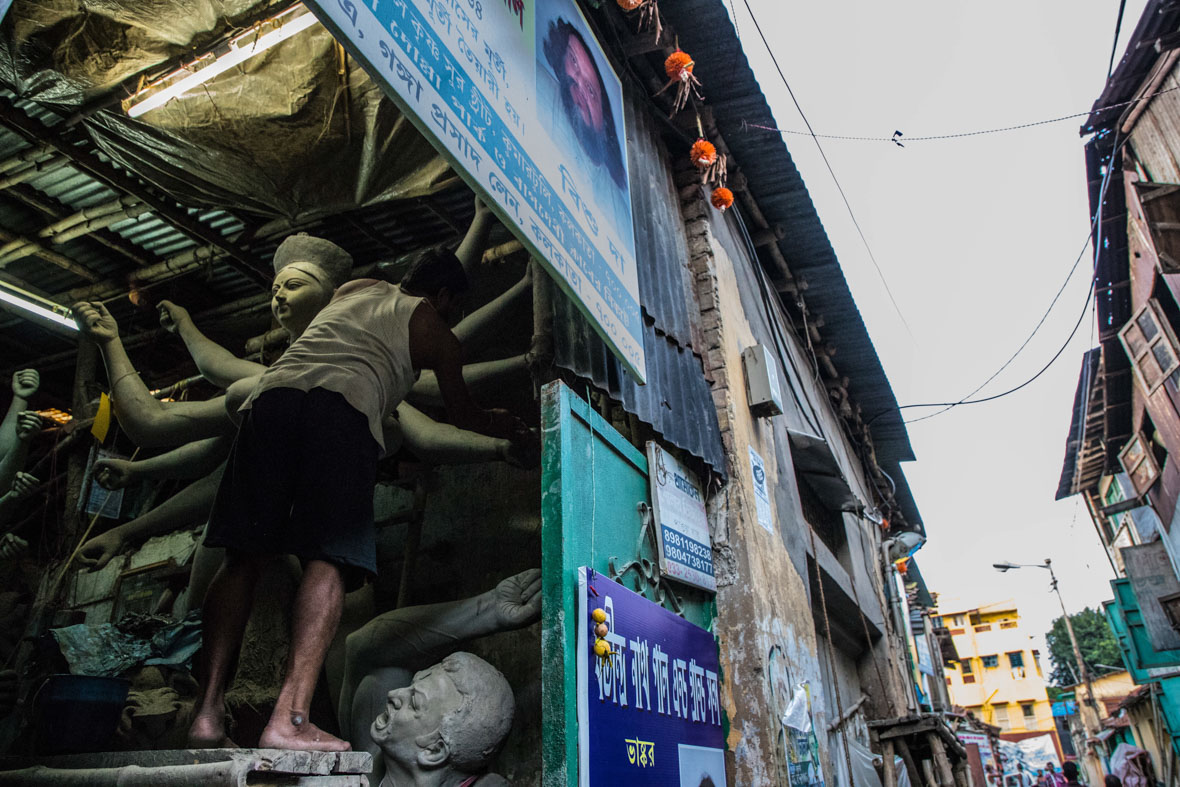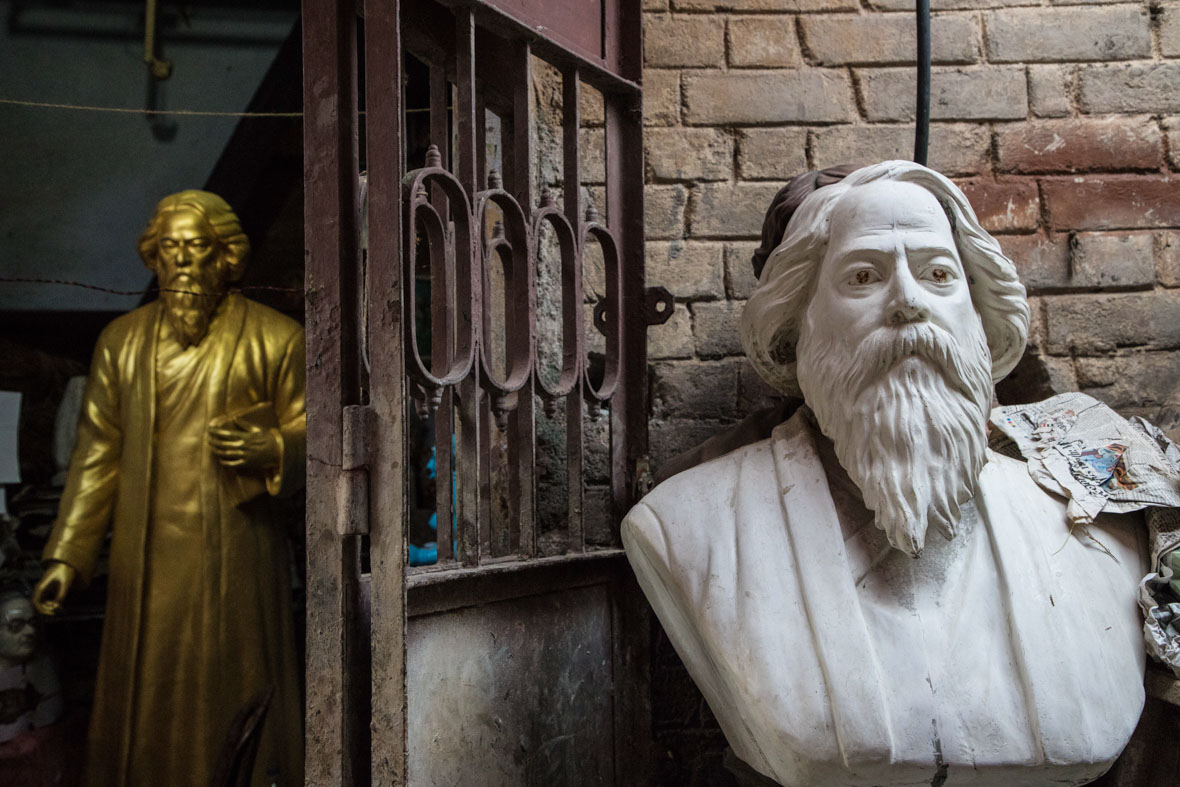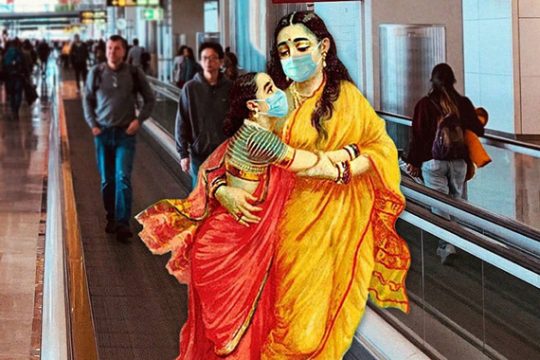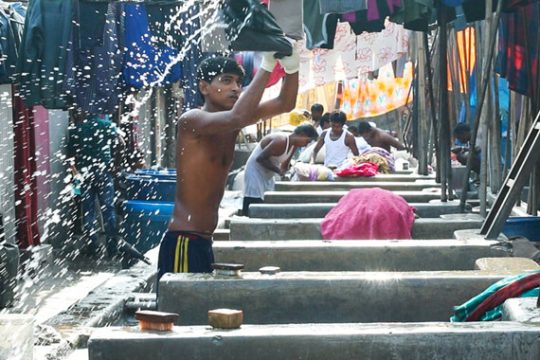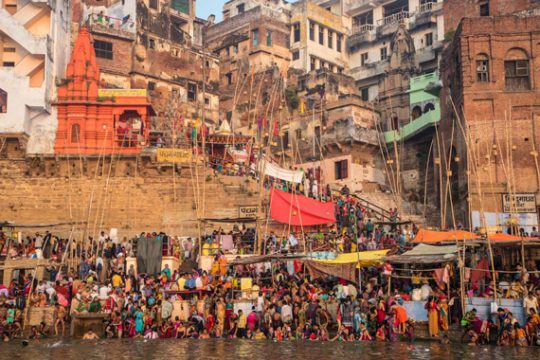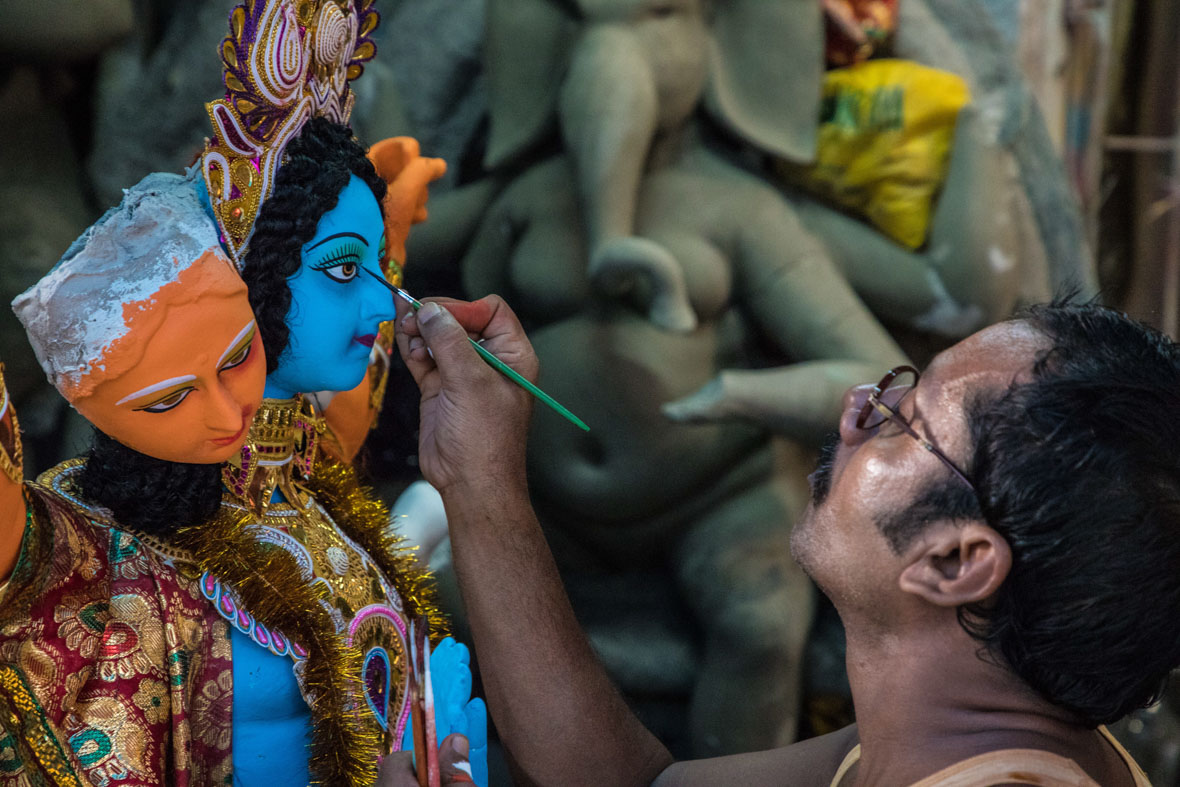
Kumortuli is a traditional potter’s quarter in Kolkata, India where artisans have been living and honing their craft for centuries. But what type of work do these artists create? The answer can be found in the festivals that are often associated with India. When most people think of festivals in India, the popular Diwali and Holi will most likely be the first to come to mind. However, that’s barely scratching the surface of India’s love of celebration. Every state has a particular festival that it celebrates with more pomp and splendor than the rest of the country. For Kolkata, it’s Durga Puja.
Kumortuli是印度加尔各答的一个传统陶器产区,几百年来,陶艺工匠生活在这里生活、磨练制陶手艺。而当地陶艺工匠所创作的作品到底如何?答案可以在印度的一些传统节日中找到。说到印度的节日,大多数人首先想到的应该是像排灯节(Diwali)和侯丽节(Holi)这些著名的节日。然而,这些节日其实只能算是印度众多节日中的凤毛麟角,它们不能完全体现出印度人们对节日的热爱。事实上,在印度,每个州都有它的特色节日,在庆祝这个节日时,会比全国其它地方庆祝的方式更隆重、更热闹。而加尔各答的特色节日正是杜尔加女神节(Durga Puja)。
Durga Puja is an annual festival that happens in late September or early October. It reveres the Hindu deity Durga, a fierce goddess of war. One of the most popular legends associated with the goddess is of her battle against demon king Mahishasur. As such, a common depiction of the goddess shows her thrusting her Trishul (a trident that many deities of Hinduism wield) into the demon. In Hindu mythology, every god and goddess ride a vahana for travel. In turn, another common depiction of Durga is atop her vahana, a tiger. Various depictions of this goddess can be seen during Kolkata’s Durga Puja, all of which are created by the artists of Kumortuli.
一年一度的杜尔加女神节于9月底或10月初期间举行。节日是为了庆祝印度教中强大的女战神——杜尔加女神。关于杜尔加女神,最著名的一个传说是她打败妖王(Mahishasur)的那场战斗。因此,她最常见的形象是将自己的三叉戟(Trishul,许多印度教神像使用的三叉戟)插入恶魔身体。在印度神话中,所有的神灵和女神都会乘着一只座骑( vahana )出行。所以,杜尔加女神的另一种常见的形象是她骑着自己的老虎座骑。在加尔各答的杜尔加女神节期间,人们可以看到关于这位女神的各种形象,而打造这些神象的正是Kumortuli的艺术家们。
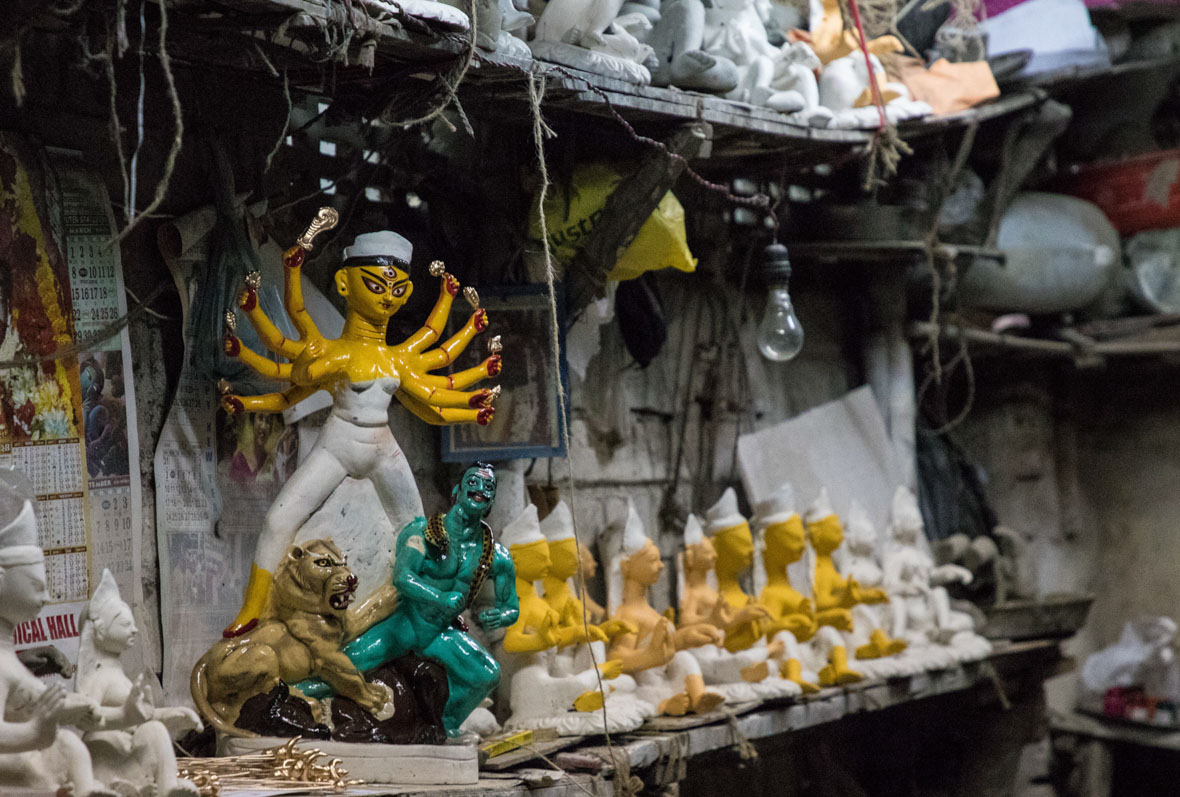
The Kumortuli quarters have hundreds of artisans working day and night throughout the year to create idols. A typical workshop is nothing more than a small patch of land with minimum necessities and only enough space to house materials and the completed works. Despite the difficult working conditions, the increasing prosperity of the region means that people are spending more and more on recreational activities, which includes the celebration of Durga Puja. As a result, the sculptors of Kumortuli have been given much more creative freedom in their sculptures in recent times.
在Kumortuli区,数百名陶艺工匠全年日夜奋战,制作一个个神像。在这里,大部分的制陶作坊不过是一块地,里面有最基本的工具设备,有刚好足够的空间来放置材料和完工后的作品。尽管工作条件困难,但经济的日益繁荣意味着人们可以有越来越多的经济能力用于娱乐活动,其中包括杜尔加女神节的庆祝活动,所以,近来Kumortuli的雕塑家在创作这些神像时也有了更多的自由和创意发挥。
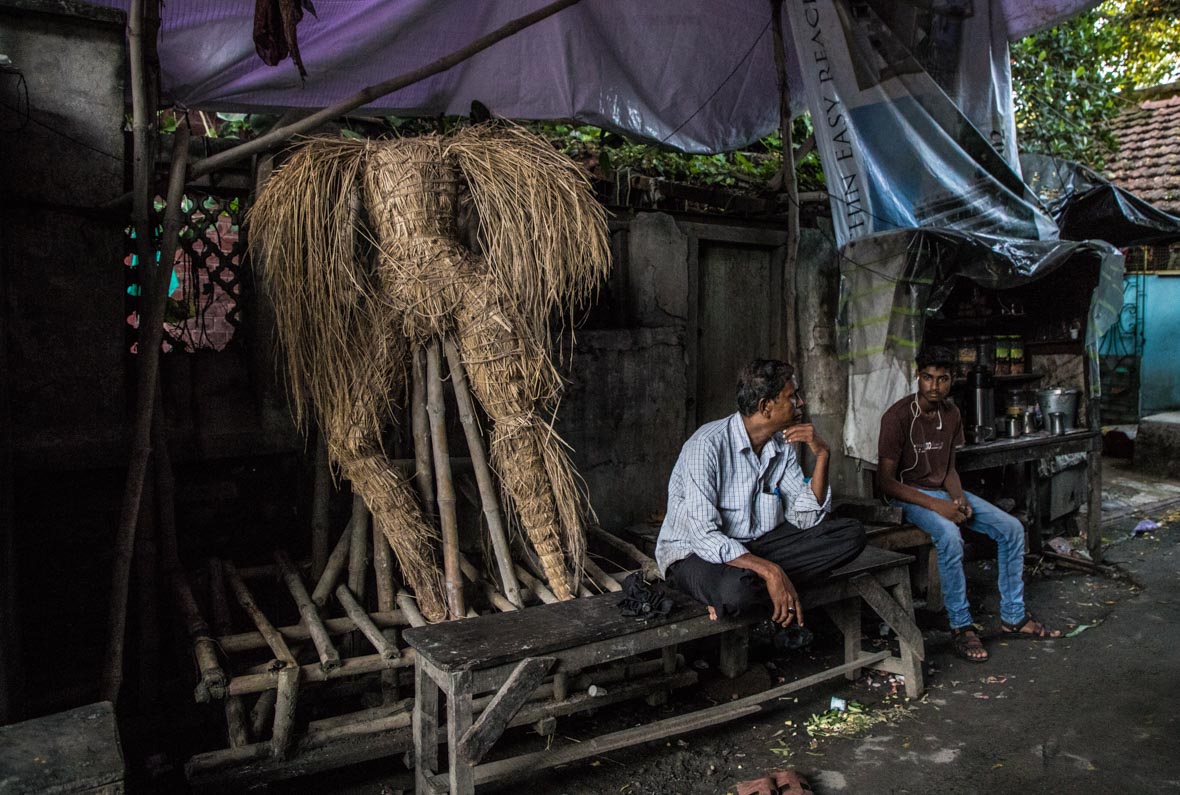
The sculpture creation process in Kumortuli is completely eco-friendly, but the process is tedious. The base of sculptures are made of bamboo sticks, which are ferried in by boat from nearby regions. The bamboo then needs to be dried on river banks. Afterwards, artists will begin creating the foundation. Once the base is done, a coat of clay is applied to shape the idol and recycled paper is used to fill the cracks. Once the clay structure is complete to reveal the perfect likeness of the idol, an artist paints over it with vibrant colors. In the final step, the sculpture is adorned with clothing, accessories, and jewelry. After the celebration ends, devotees submerge their idols into water, which results in the clay being washed away. Artists will then recover the bamboo base to reuse the following year.
在Kumortuli区,神像雕塑的创作过程完全符合环保,但十分繁琐。神像雕塑的基座是由竹竿制成的,这些竹竿都是从邻近地区用船运来的。然后,人们会先将这些竹子放在河岸上干燥。干燥完,艺术家们就可以开始打造基座。完成基座后,艺术家会用粘土涂层来塑造神像,并用再生纸填充裂缝。一旦粘土层能够充分展现出神像的形态后,艺术家就会开始用鲜艳的色彩上色。在最后一步,他们会用服装、饰品和珠宝来装饰神像雕塑。庆典结束后,信徒们会将自己的神像放入水中,让水将外层的粘土冲走,然后艺术家可以将剩下的竹竿结构回收,用于制作来年的神像雕像。
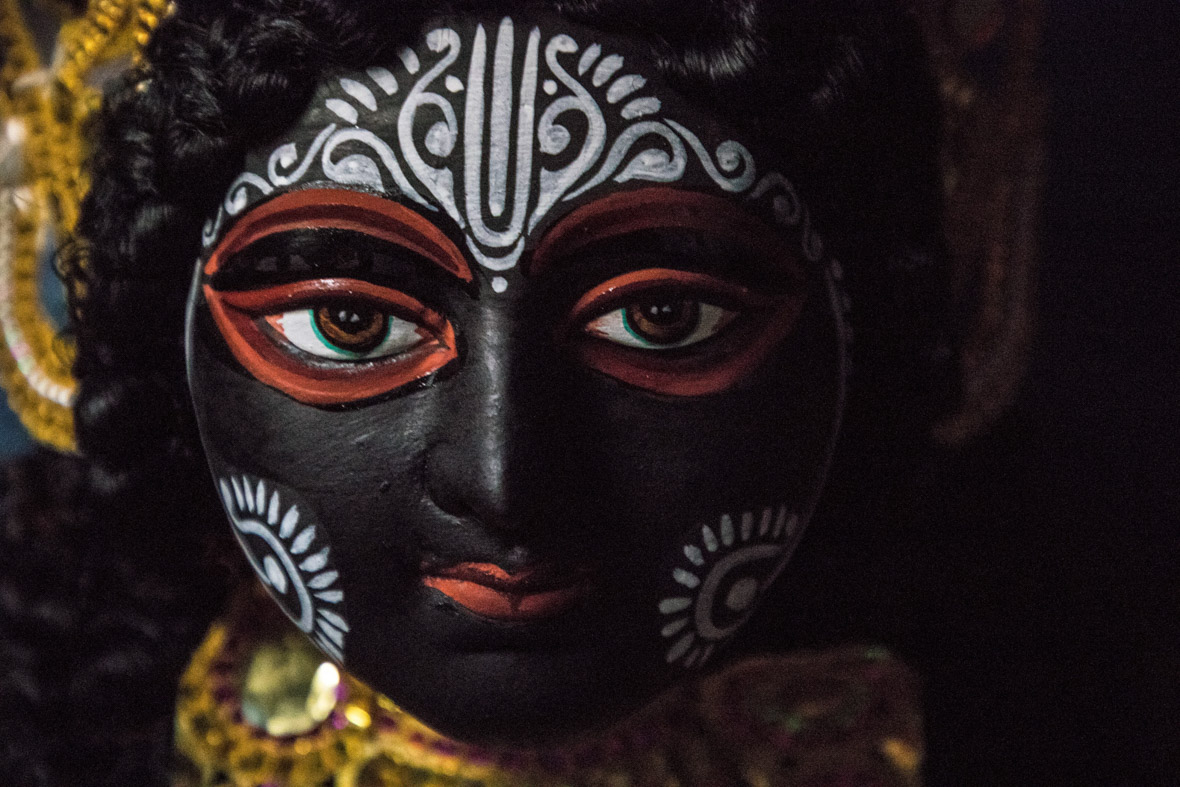
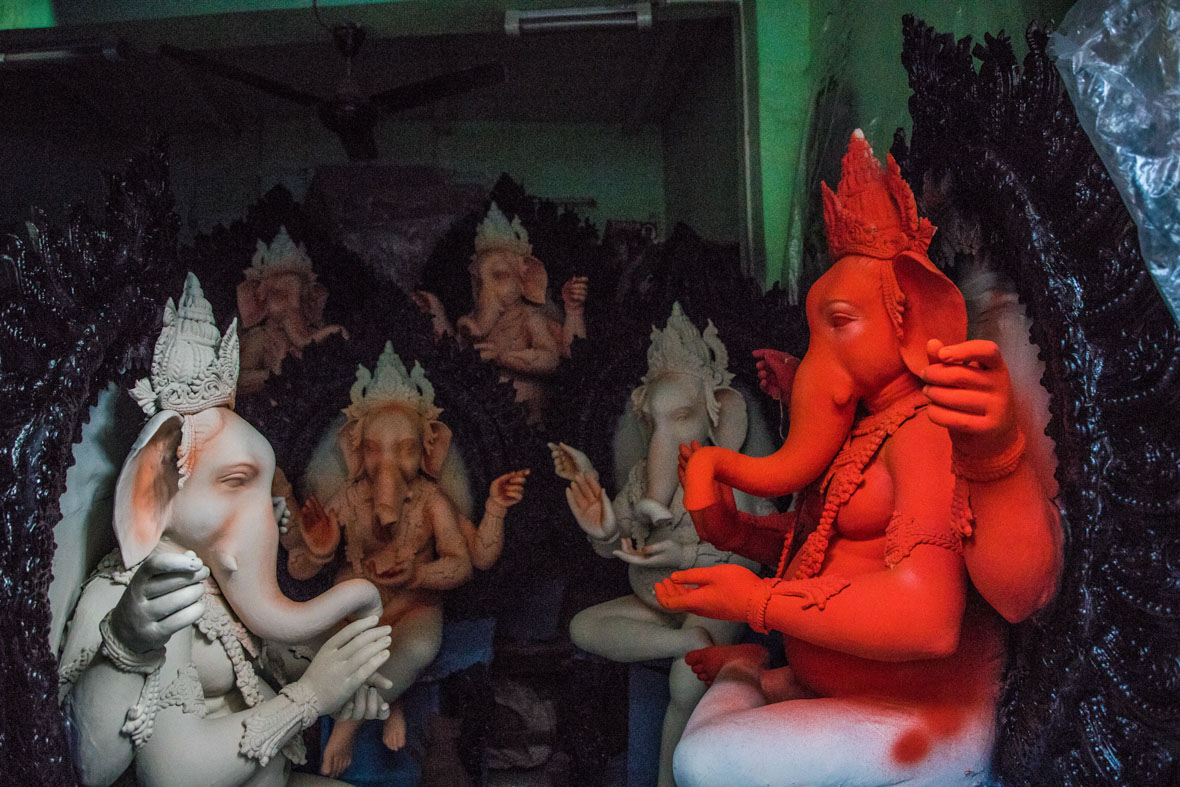
While the main idols created at Kumortuli are of Durga, sculptors also create idols of other Hindu gods and goddesses for worship at different festivals across the country. These idols include Lord Ganesha, Goddess Saraswati, Goddess Lakshmi, and more. Visitors can even come across sculptures of Jesus Christ in Kumortuli since Christmas is commonly celebrated in Kolkata and other parts of India. Strolling around and taking a look at the workshops of different artisans is surprisingly evealing of the diverse religious fabric of India. Aside from religious figures, sculptors also create statues of important cultural figures like Swami Vivekananda and Rabindranath Tagore, two respected philosophers and intellectuals who are widely honored on their birthdays.
虽然在Kumortuli区,最常见的神像是杜尔加女神,但艺术家们还会创作其他印度教的神灵和女神,用于在全国各地不同的节日供人们崇拜。这些神像包括象头神(Lord Ganesha)、辩才天女(Goddess Saraswati)、吉祥天女(Goddess Lakshmi)等等。游客甚至可以在Kumortuli区看到耶稣基督的雕塑,因为在加尔各答和印度其它地区,人们也会庆祝圣诞节。在不同艺术家的作坊里闲逛,往往能意外地发现印度不同宗教的文化。除了宗教人物,这里的艺术家也会打造文化名人的雕像,譬如印度两位受人尊敬的哲学家斯瓦米·维韦卡南达(Swami Vivekananda)和罗宾德拉纳特·泰戈尔(Rabindranath Tagore),因为人们在他们生日那天举办庆祝活动来纪念他们。
The sculptures created in Kumortuli are not only sold locally or domestically. There’s often demand for them on an international level. Indians living abroad will even commission work from artists in Kumartuli. Due to this demand, many artists in Kumortuli will end up working tirelessly throughout the year to keep up with the sheer amount of festivals and celebrations. While hordes of photographers frequent this unique place all the time, the sculptors are quite immune to the attention and lead humble lives. Families of artists have passed down their craft from generation to generation – their dedication and hard work contribute to the preservation of tradition and culture in not only Kolkata but India as a whole.
在Kumortuli制作的雕塑不仅会在本地或印度国内出售,还常常被销售到其它国家。在国外生活的印度人甚至会委托Kumartuli的艺术家打造作品。由于需求太多,Kumortuli区的许多艺术家经常要全年不断地工作,才能满足各种节日和庆祝活动的需求。许多摄影师前来参观这个独特的地方,但当地艺术家们对于这种关注已经免疫,始终默默无闻地生活。艺术家们将自己的手艺在家中代代相传,正是他们的奉献和辛勤工作,让加尔各答乃至印度的传统工艺和文化得以传承下去。

